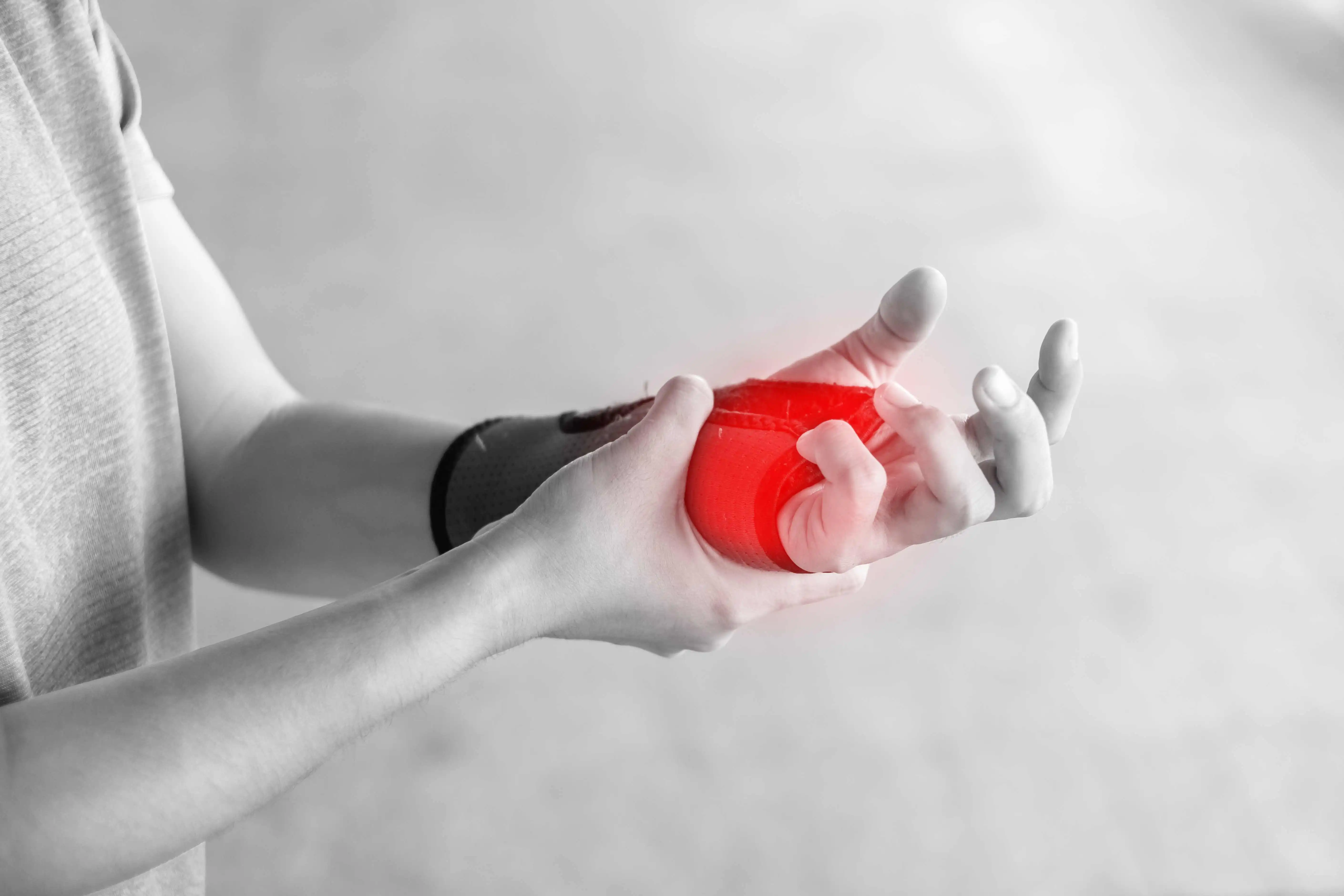Wrist pain can be a frustrating and debilitating condition that affects daily activities, from typing on a keyboard to participating in sports. Whether you’re dealing with carpal tunnel syndrome, tendonitis, or a sprain, finding effective wrist pain treatment options is essential for relieving discomfort and restoring function to your wrist.
While medical interventions like surgery and medication can be effective, you can also try regenerative therapy and wrist pain exercises to alleviate symptoms and prevent future pain. From stretches and strength-building exercises to ergonomic adjustments and lifestyle changes, there are many ways to approach wrist pain treatment.
What are the Causes of Wrist Pain?

Various conditions, such as carpal tunnel syndrome, tendinitis, ganglion cysts, gout, osteoarthritis, psoriatic arthritis, rheumatoid arthritis, lupus, infection, tumor, and cervical nerve compression, can cause wrist pain. Identifying the underlying cause of wrist pain is essential for proper treatment.
- Common causes of wrist pain include carpal tunnel syndrome, tendinitis, ganglion cysts, gout, osteoarthritis, psoriatic arthritis, rheumatoid arthritis, and lupus.
- Carpal tunnel syndrome occurs when swelling from repetitive movements or excess weight squeezes the median nerve within its canal.
- Tendinitis can occur when tendons in the wrist become irritated and swell, causing pain with movement or spontaneous rupture.
- Ganglion cysts are non-cancerous, fluid-filled lumps that can form on wrist joints and tendons, causing discomfort.
- Gout is a type of arthritis that inflames joints, making them painful, tender, and swollen. It occurs when too much uric acid builds up in the bloodstream, causing painful joints and soft tissue crystals.
- Osteoarthritis develops when the cartilage that covers the ends of bones wears down, causing the bone to rub against the bone, leading to pain, swelling, and stiffness.
- Psoriatic arthritis and rheumatoid arthritis are autoimmune diseases that can cause wrist pain, tenderness, and swelling.
- Lupus is an autoimmune disease that can cause arthritis in the small joints of the wrist and hand.
- Uncommon causes of wrist pain may include infection, tumors, avascular necrosis of a carpal bone, or cervical nerve compression.
Various Wrist Pain Treatment Options

Wrist pain treatment options include medical interventions like surgery and medication and non-invasive approaches such as wrist pain exercises, stretches, and strength-building exercises.
Lifestyle changes like ergonomic adjustments and avoiding repetitive motions can also help prevent future wrist pain. Rest and recovery are crucial for allowing the wrist to heal and reduce inflammation.
It’s important to consult with a medical professional to determine the underlying cause of wrist pain and develop an appropriate treatment plan. Taking the right approach can reduce pain, improve function, and maintain good wrist health.
Wrist Pain Treatment with Regenerative Masters
The Regenerative Masters approach to wrist pain treatment focuses on treating the patient as a whole rather than just the affected area. The team of experts uses a combination of
- Sports medicine
- Naturopathy
- Regenerative and Cellular therapy
- Hypnosis
- Physical therapy
- Diet
- Psychological therapy, and
- Personal training.
Regenerative and Cellular Therapy, in particular, has become increasingly popular due to its minimally invasive approach and use of the patient’s cells to revive the affected area. This therapy aims to alleviate joint pain, regenerate cells, minimize recovery time, and provide long-lasting relief from chronic joint pain.
Medical Treatments
Surgery
In severe cases, surgery may be necessary to alleviate wrist pain. It’s typically only recommended when other treatments have been unsuccessful.
Medication
Over-the-counter pain relievers such as ibuprofen or acetaminophen can relieve mild wrist pain. If the condition worsens, stronger medication may be necessary, and a prescription may be required.
Home Remedies
- Rest and Ice: Resting the affected wrist and applying ice can help alleviate pain and reduce inflammation.
- Compression: Compression can help reduce swelling and provide support.
- Heat therapy: Heat therapy can help relax muscles and increase blood flow to the affected area.
Wrist Pain Exercises
Stretching Exercises
- Wrist flexor stretch: Hold your arm straight with your palm facing down. Gently pull your fingers back towards your wrist using your other hand until you feel a stretch. Hold for 15-30 seconds and repeat on the other hand.
- Wrist extensor stretch: Hold your arm straight with your palm facing up. Use your other hand to gently push your fingers toward your wrist until you feel a stretch. Hold for 15-30 seconds and repeat on the other hand.
Strengthening Exercises
- Wrist curls: Hold a lightweight in your hand and rest your forearm on a table or bench. Slowly lift the weight towards your wrist, then lower it back down. Repeat the exercise for 10-15 repetitions and switch to the other hand.
- Reverse wrist curls: Hold a lightweight in your hand and rest your forearm on a table or bench with your palm facing down. Slowly lift the weight towards your wrist, then lower it back down. Repeat the exercise for 10-15 repetitions and switch to the other hand.
Range of Motion Exercises
- Wrist circles: Hold your arm out straight and rotate your wrist in a circular motion, clockwise and counterclockwise.
- Finger taps: Tap your fingers on a table or surface for 30–60 seconds to improve wrist and hand mobility.
Lifestyle Changes
Ergonomic Adjustments
- Adjust your work environment: Make sure your computer, keyboard, and mouse are positioned ergonomically to reduce strain on your wrist.
- Use proper posture: Sit straight and neutralize your wrists and arms to prevent unnecessary strain.
Avoiding Repetitive Motions
- Take breaks every 20-30 minutes to rest your wrist and stretch.
- Perform alternate tasks that require different hand and wrist movements to avoid repetitive strain.
Rest and Recovery
- Take time off: If your wrist pain is severe, take a break from activities that aggravate it.
- Use a splint or brace: Use a splint or brace to support your wrist during recovery.
How to Prevent Wrist Pain

Preventing wrist pain involves taking proactive measures to avoid repetitive motions or awkward wrist positions. Here are some tips to help prevent wrist pain:
- Maintain proper posture: Keeping a good posture can help avoid unnecessary strain on your wrists.
- Take frequent breaks: If you perform tasks involving repetitive wrist motions, stretch your wrists and hands.
- Practice good ergonomics: Ensure your work area is properly set up with ergonomically designed equipment.
- Strengthen your wrists: Engage in exercises to strengthen the muscles in your wrists.
- Avoid excessive force: When performing manual tasks, use proper technique and avoid applying excessive force.
- Wear wrist support: Wearing wrist support can help reduce stress on your wrists while performing manual tasks.
- Maintaining a healthy weight: Excess weight can pressure your joints and wrists.
Get Rid of Your Wrist Pain Without Surgery at Regenerative Masters
Wrist pain is one of the most common yet challenging pains to deal with because it can cause difficulty performing daily tasks. Due to the advancement in the medical industry, many wrist pain treatment options are available.
Although surgery is a commonly chosen approach for wrist pain treatment, it is an invasive procedure. However, if you want freedom from wrist pain in a non-invasive way, then Regenerative Masters has the proper solution for you.
In the leadership of Dr. Ron Hanson, the specialists of Regenerative Masters help you get rid of that unbearable wrist pain. Give us the details of the problem you’re facing, and our team will reach out to you quickly. You can also connect with us at (612) 800-5096 or info@regenerativemasters.com.

